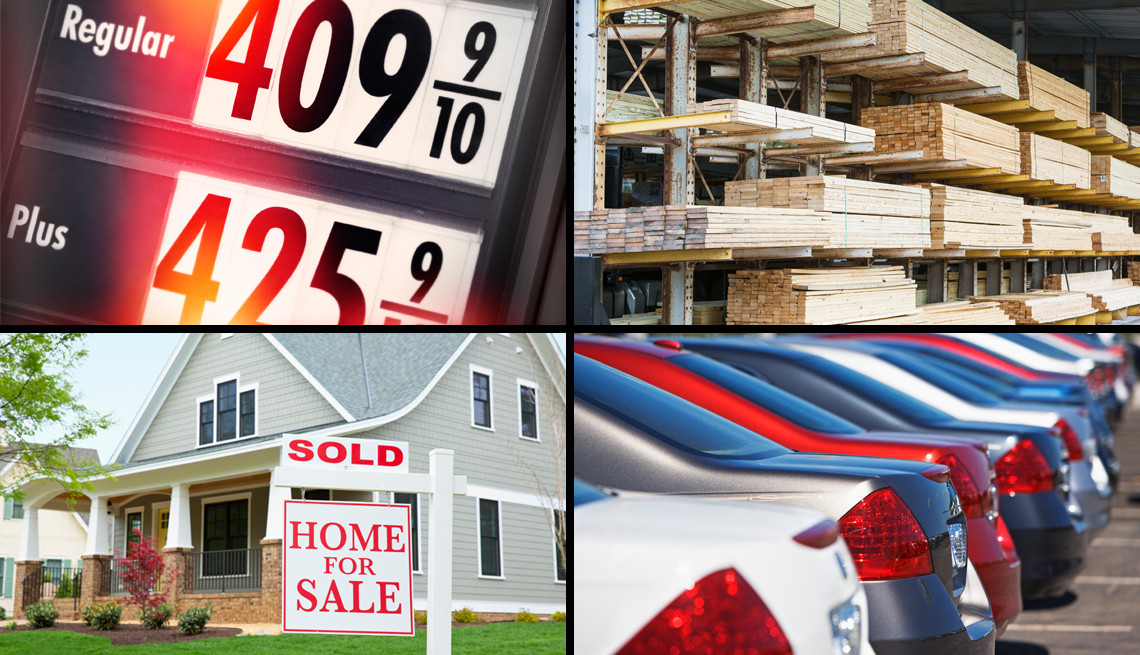Staying Fit
If you've bought gas, a car or a BLT from Joe's recently, you already know that prices are rising.
The consumer price index (CPI), the government's main gauge of inflation, jumped 0.8 percent in April and 4.2 percent over the past year. It's the largest 12-month increase since the period ending September 2008. Low supply and high demand have combined to drive up prices on a variety of goods. Here's a closer look at 10 items that are seeing big cost increases this year.


AARP Membership— $12 for your first year when you sign up for Automatic Renewal
Get instant access to members-only products and hundreds of discounts, a free second membership, and a subscription to AARP the Magazine.
1. Gasoline
The biggest headline-grabber is gas. The Bureau of Labor Statistics (BLS) says that its index of gasoline prices has jumped 49.6 percent over the past 12 months. A year ago, when the pandemic had many people staying home and off the road, a gallon of unleaded cost just $1.85, according to AAA. Today, it's averaging $3.01 per gallon.
Making matters worse, the hacking of the massive Colonial Pipeline has caused gas shortages up and down the East Coast. As of May 12, 28 percent of North Carolina stations had no gas. Compounding the problem, the trucking industry says it doesn't have enough drivers for the tanker trucks used to resupply stations and keep pumps flowing.
2. Oil
Demand for oil walked off a cliff last year as the economy shut down due to the pandemic. The price of a barrel of West Texas intermediate crude oil ended 2019 above $60. In April 2020, the price actually plunged below zero in an astonishing meltdown. Since then, prices have steadily increased as the industry struggles to keep up with growing demand as the economy reopens. Today, crude is again selling at pre-pandemic prices above $60 a barrel.
Prices could remain higher as the oil industry scrambles for workers, and that could take a while, because the industry needs skilled labor. “A lot of the people who lost their jobs were urban service workers,” says Michael Englund, chief economist for Action Economics. A waitress in the Bronx is unlikely to take a job at a fracking site in West Texas, he notes. Until production catches up with demand, gas prices, which are tied to oil prices, could remain high.
3. Used cars
The average cost of a used car zoomed to $25,463 in April, according to research firm J.D. Power — the first time the amount has risen above $25,000. Prices jumped 10 percent alone in April, the latest CPI report found, the largest monthly increase since the government started tracking used-car prices in 1953.
What's behind the price surge? A shortage of computer chips. Most cars use a number of semiconductors for everything from increasing engine performance to monitoring cabin temperature. A fire at a major Japanese chip plant and severe winter storms in Texas that disrupted domestic chip manufacturing suddenly made semiconductors a scarce commodity. With fewer new cars rolling off the assembly line, demand for used cars has skyrocketed.


































































